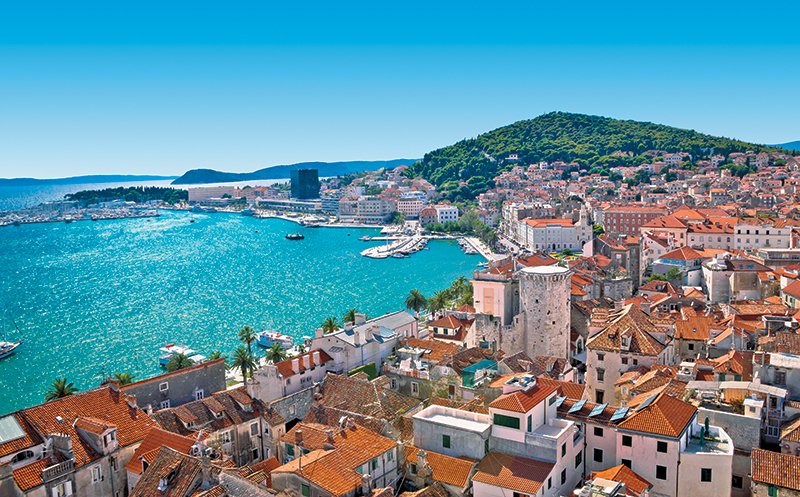When the European Union (E.U.) in late June announced that United States citizens would be barred from visiting the bloc when it reopened on July 1, travel took a major hit (or, as big of a hit it could take due to COVID-19) since it’s one of the top destinations for American travelers. While countries may opt out of the agreement, the ones that are—like Italy, according to The Local—however, are keeping their borders closed, rather than opening to additional countries.
The move was called “a short-sighted decision that could have unintended long-term consequences” by American Society of Travel Advisors president and CEO Zane Kerby, adding it was “economically irresponsible.”
With that said, there are still countries in Europe that Americans may visit. They are:
Croatia
As of July 1, 2020, all E.U./European Economic Area (E.E.A.) nationals and individuals holding permanent residence in the E.U./E.E.A. countries can enter Croatia freely, without restrictions. All other foreign nationals, including U.S. citizens, may enter the Croatia for business, tourism, or other pressing personal reasons, if they provide relevant proof. For tourists, according to the Croatia Ministry of the Interior, it is necessary to present a confirmation of the reservation or paid accommodation in one of the accommodation facilities in the Republic of Croatia (e.g. confirmation of the reservation of accommodation of all accommodation providers, permanent berth contract in a nautical tourism port, travel agency voucher, etc.)
Croatia has lifted mandatory self-isolation and quarantine restrictions for individuals entering Croatia. Instead, individuals are given a pamphlet with recommendations and instructions from the Croatian Institute of Public Health that they must follow for 14 days after entering the country.
Kosovo
Kosovo is open to visitors with no restrictions for COVID-19, although it is recommended that travelers have a negative test within four days of arrival. Officials at Pristina International Airport are asking that those arriving or departing be accompanied by only one person in order to enforce social distancing.
Further, the State Department says to reconsider travel to North Mitrovica, Leposavic, Zubin Potok and Zvecan due to civil unrest.
North Macedonia
As of June 26, according to the State Department, there are no requirements for a PCR test or isolation for entering North Macedonia. Skopje Airport reopened for flights on July 1 and Ohrid Airport followed on July 2. Travelers displaying symptoms of COVID-19 infection such as a fever of 99.1 degrees Fahrenheit or higher and coughing may not be permitted to enter the airport and board their flights. Individuals must practice social distancing of six feet in public and wear a protective face covering in closed public spaces. The indoor areas of bars and restaurants are permitted to operate while implementing specific protocols.
Serbia
All COVID-19 related entry restrictions are lifted for both Serbian and foreign citizens, the State Department reports. In addition, it is no longer necessary to have a negative PCR test or special permit to enter Serbia, while the government of Serbia also abolished self-isolation requirements upon entry.
Note, however, that on July 7, Serbian president Aleksandar Vučić described COVID-19 situation as critical in Belgrade and four other cities. There is a possibility of a curfew for all from July 10 to July 13, as well as a prohibition on public gatherings of more than five people. In the city of Belgrade, wearing masks is mandatory for everyone using public transportation and in all indoor spaces, without exception.
Turkey
On June 11, Turkey announced opening the majority of its international air, land, and sea borders; tourist travelers do not need any specific health documentation to enter/exit Turkey unless they are arriving for medical treatment. No quarantine is required. For more information, visit the U.S. State Department.
Ukraine
U.S. citizens will be allowed to enter Ukraine if they can demonstrate that they have medical insurance covering all expenses related to COVID-19 treatment while on the territory of Ukraine. U.S. citizens entering Ukraine will be required to enter into self-quarantine if the Ministry of Health considers the United States a country with high incidence of COVID-19.
Most regions have reopened the following services and institutions, subject to certain social distancing requirements but the State Department adds you should check with local authorities regarding local quarantine guidelines. Wearing masks in public places, including public transportation, at all times is mandatory.
United Kingdom
At present, according to the BBC, passengers arriving in the U.K. by plane, ferry or train will be asked to provide an address where they will self-isolate for 14 days. Travelers can be fined £100 ($126) for failing to fill in a form with these details and up to £1,000 ($1,259) if they fail to self-isolate. Anyone arriving from the Common Travel Area (CTA)—the Republic of Ireland, the Channel Islands or the Isle of Man—does not have to enter quarantine, as long as they have been in the CTA for at least 14 days.
From 10 July, travelers from countries deemed ”low risk” will also not have to go in to quarantine when they enter England—although it’s not likely the U.S. will be on this list.
Note: The U.S. State Department, since March 31, has had a Global Health Advisory in place set at Level 4: Do Not Travel.
This article originally appeared on www.travelagentcentral.com.
UPDATE: As borders open and consumers are ready to travel again, travel insurance is a must. Learn more about the best insurance options by clicking here.




Leave A Comment